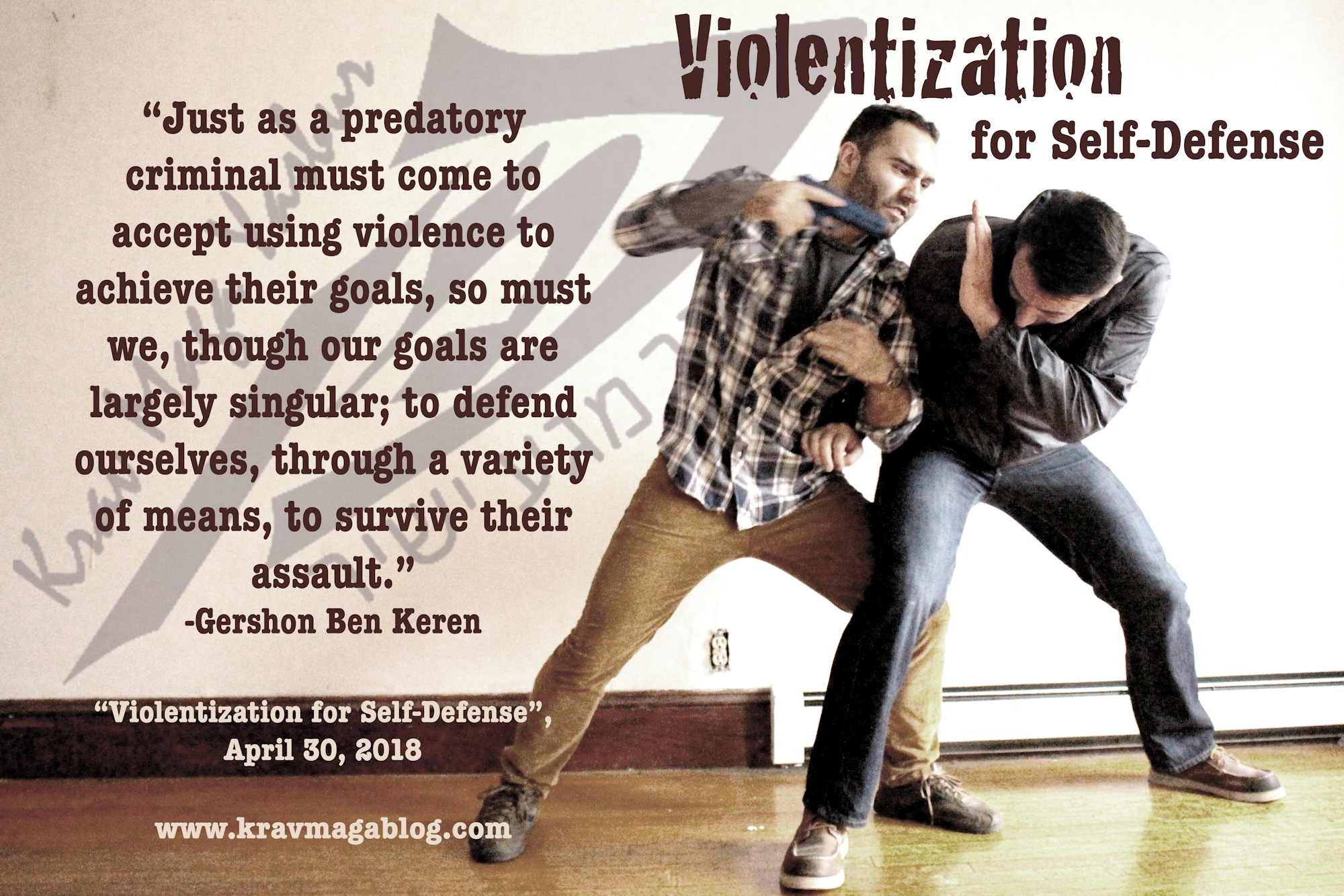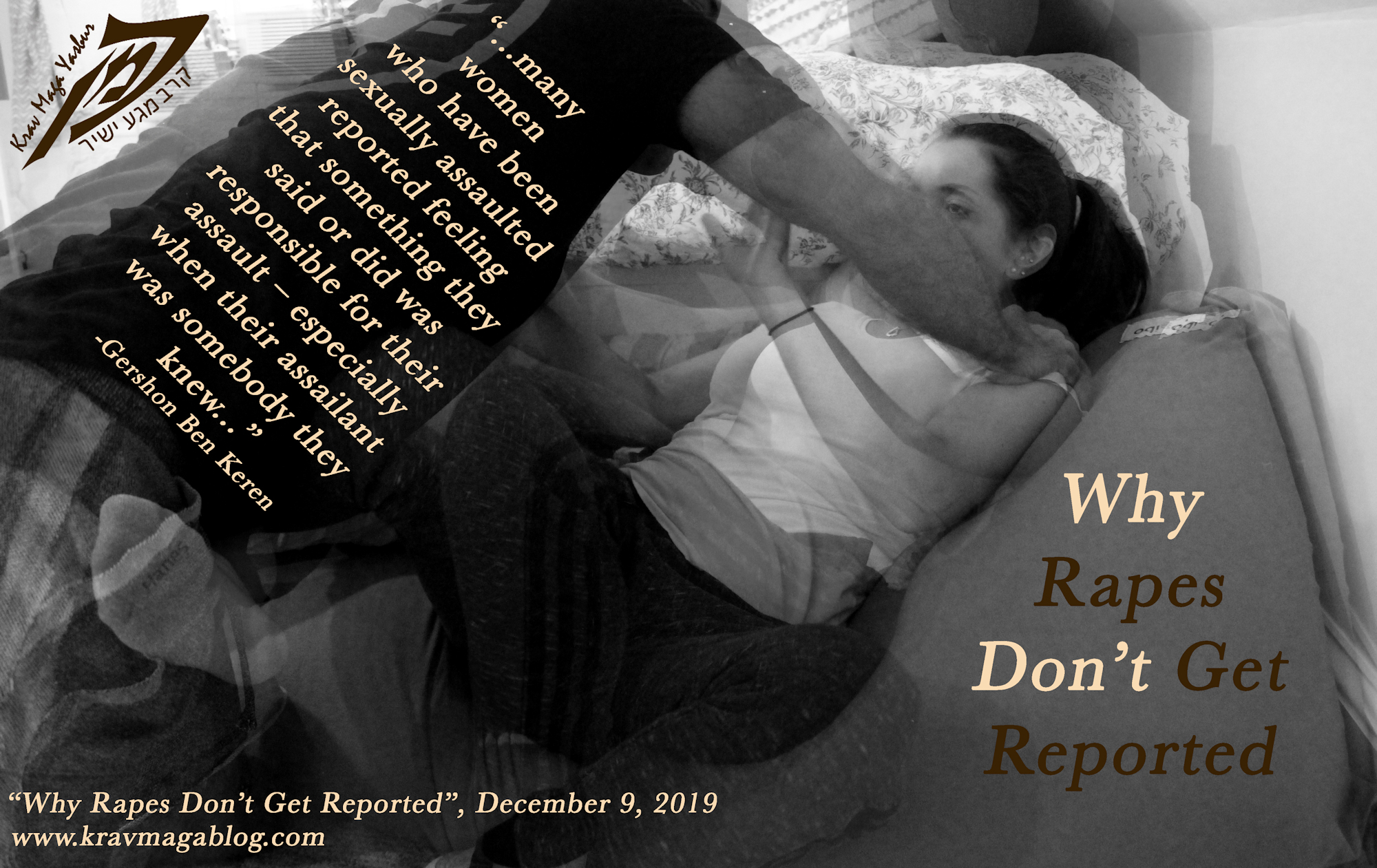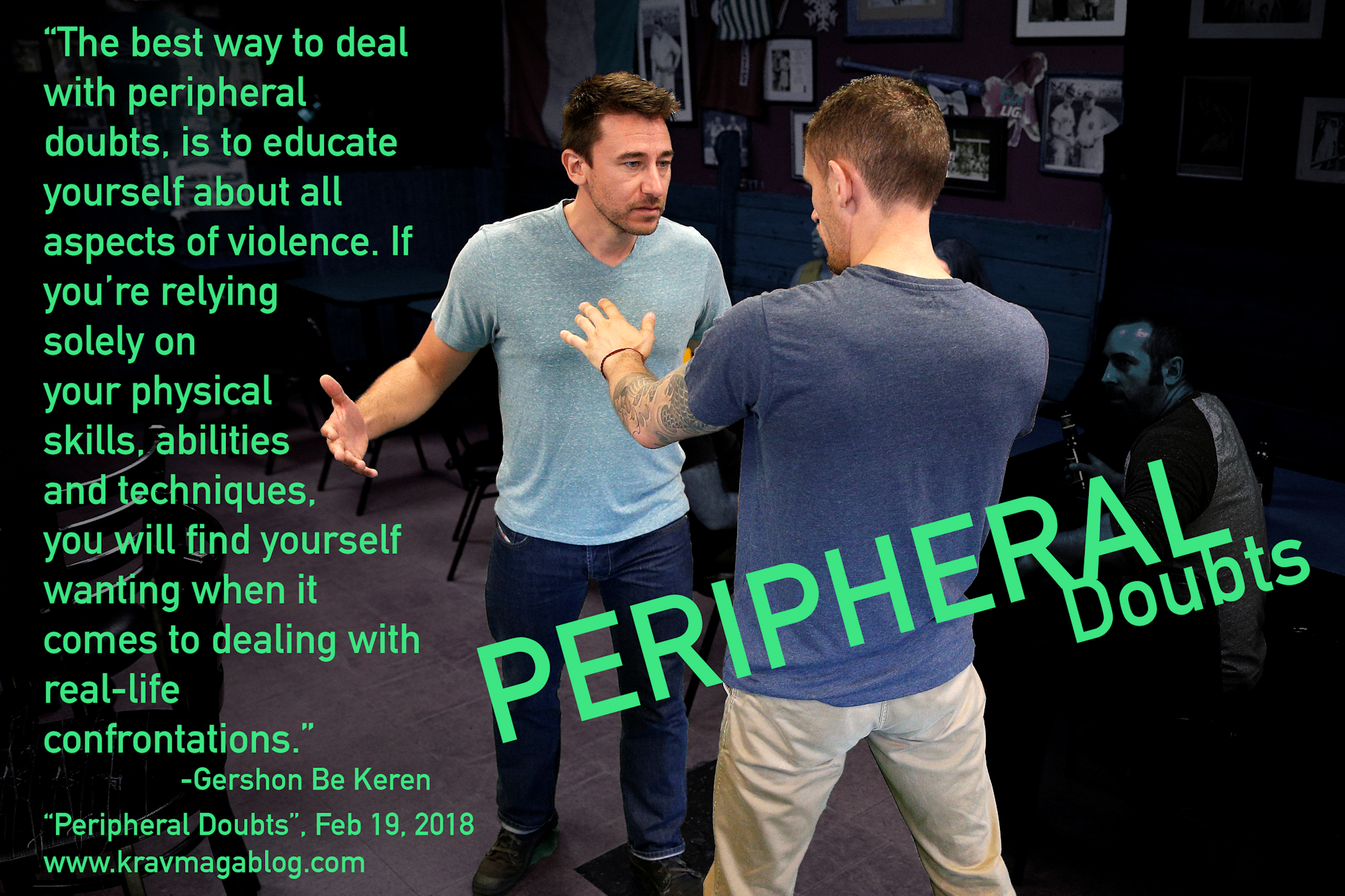Peripheral Doubts, is an article written by Gershon Ben Keren, a 5th Degree Black Belt in Krav Maga, who teaches Krav Maga in Boston, MA. He has also authored three Amazon best-Selling Books on Krav Maga.
A couple of weeks ago, I wrote an article on several physical steps that can be taken in the Pre-Conflict Phase – in Socially/Spontaneously Violent Situations - to improve your chances, should things have to go physical (Working the Pre-Conflict Phase – February 5th). In this article I want to look at how to manage, some of the psychological and emotional factors that may affect us, when having to deal with an aggressive individual, in the moments before it goes hands-on.
Managing Disbelief: overcoming the surrealness/bizarreness of the situation. I have seen people laugh in disbelief just before they were punched; they simply couldn’t believe that the incident they were involved in justified the use of physical force – it was literally laughable to them. This reaction/response is more common than you may think, and everyone is susceptible to it. We may like to think we will always judge a situation correctly, and recognize aggression in others, but sometimes our own positive/buoyant emotional state (especially if fueled by alcohol), will make us interpret a person’s actions and behaviors from our perspective rather than theirs i.e. if we are feeling happy, we will have a tendency to interpret another person’s facial expressions, such as a grimace, as being a smile, and even believe that their displays of aggression are in fact them “joking” around. Disbelief, is a form of denial, and this is one of our default coping mechanisms when dealing with aggression and violence: if we can tell ourselves something isn’t happening, we don’t have to feel scared or afraid – and that’s a feeling that we’re largely unfamiliar with, don’t like, and try to avoid at almost any cost. Laughing, makes us feel better, and allows us to deny the danger we’re in i.e. a quick mental re-write of the situation, and we’re all good. The first thing to do in your mental checklist, is to accept the situation for what it is, and recognize that it is not your rational/reasoning understanding of the situation that is relevant, but the other person’s aggression and emotion. What is the likelihood that somebody would threaten you, act aggressively towards you, for any other reason, than wanting to potentially harm you? The less you believe that you will ever have to deal with a potentially violent aggressor, the more likely you are to be caught in a state of disbelief when you do.
Managing Fear: overcoming the fear of fear. Fear is an emotion, not a feeling – being afraid is the “feeling” you get when you interpret your emotional state, within the context of harm and danger. Another way to look at it is, being afraid, is how you describe to yourself, and the word(s) you use when you talk to yourself, about your emotional state. When your fear system is triggered – subconsciously – you become adrenalized and your emotional state changes, and you tell yourself, “I’m afraid”. Our use of language to help recognize and describe our emotional state is important. If it was ethical to do so, I could take someone into a lab, wire them up, to record certain physiological changes (such as temperature, sweat, pupil dilation, blood pressure and other physical conditions), and give them the most terrifying experience of their life, and record the results to see what changes occurred. If I repeated this experiment, but instead of frightening the person, made them extremely angry, and then compared these changes/results, with those of the first experiment, I’d find that they were pretty much the same. The emotional change/shift would be almost identical. What would be different was how the individual described and talked to themselves about how they “felt” in each instance i.e. the language they used. When facing an aggressive individual, we can tell ourselves that we are “scared”, that we are “intimidated”, that we want to “hide”, that we “wish this wasn’t happening”, and any number of things that allow us to view our emotional state in a negative way, or we can turn it around and use other language to describe how we feel e.g. “this is unjust”, “this is bullying”, “this isn’t right” – and turn our sense of being afraid into a righteous indignation.
Managing fear in this way doesn’t mean we should respond in an overtly aggressive manner, or that we should fly into a rage etc. We still should run through our de-escalation methods and processes (“Dealing with Angry People” – 21st March 2012), and attempt to resolve the conflict peacefully, but at the same time this shouldn’t be done in an overly passive or submissive manner, as this could convince an aggressor that they would be able to deal with us physically – and it’s a good idea to always have them questioning whether this is the case or not, without coming across as challenging or overly aggressive. There is a lot more to de-escalation, than simply putting your hand up/out in a non-aggressive manner and talking softly/apologetically; there are several things that need to be communicated to an aggressor, both verbally and non-verbally. Our ability to mask our aggressive mindset, and our “righteous indignation” is a key skill to develop and cultivate.
It is worth noting that once you start “fighting”, when you have something to do, and a goal to achieve, you don’t have time to consciously process and interpret your emotional state i.e. being afraid usually goes at that point. It is the anticipation stage, during the Conflict-Aware and Pre-Conflict phases, that gives you the time and the bandwidth to think about these things.
Managing Peripheral Doubts: is it legal, am I morally entitled to use force, what if I make things worse? Etc. Peripheral doubts are those which cause us to question our ability to act physically/violently, and even whether or not we should. One of the questions I often hear when I teach groups for the first time, and talk about things such as pre-emptive striking, is, “is that legal?” Unanswered, that would remain a peripheral doubt that may cause them to hesitate and miss an opportunity to act, in a real-life confrontation. The easiest way to deal with this doubt, is to gain an operational and functional understanding of the legal aspects of self-defense and use-of-force etc. Know and understand what constitutes an assault, and learn to control and set the conditions, so your aggressor is the one who is/will be guilty of this. If you always have as your goal to disengage, and understand the way aggressive/violent incidents may be legally separated out to contain different phases, it is unlikely that you will ever be guilty of excessive force. If our solutions put us on the right side of the law, this doubt will be easily dealt with. If you’re legally entitled to implement your solutions, you should be morally entitled as well i.e. society is morally agreeing with you.
The fear of making things worse, is one of the major peripheral doubts we have around acting – especially when nothing physical has happened yet i.e. even if we are morally/legally entitled to make a pre-emptive strike, what if it doesn’t work and it just makes our aggressor angrier and spurs them to violence? Being able to recognize the warning signs that precede an attack, inside the legal framework that gives us the right to do so, will tell us “when” we have to act, and “when” we have no choice but to act. When violence is inevitable – and this is what the warning signs tell us – then in almost all instances it is better to be the person who acts first. Taking the initiative is better than playing catch-up and trying to create an opportunity in a dynamic confrontation. The best way to deal with peripheral doubts, is to educate yourself about all aspects of violence. If you’re relying solely on your physical skills, abilities and techniques, you will find yourself wanting when it comes to dealing with real-life confrontations.
One of the key survival skills, which I emphasize, teach and write about a lot, is decisiveness; being able to decide on a solution and act quickly. Disbelief, Paralyzing Fear and Peripheral Doubts all cause us to hesitate, and delay action, when it may be required. Learning to deal with these things and manage them is essential for effective real-world self-defense.
0 COMMENTS















